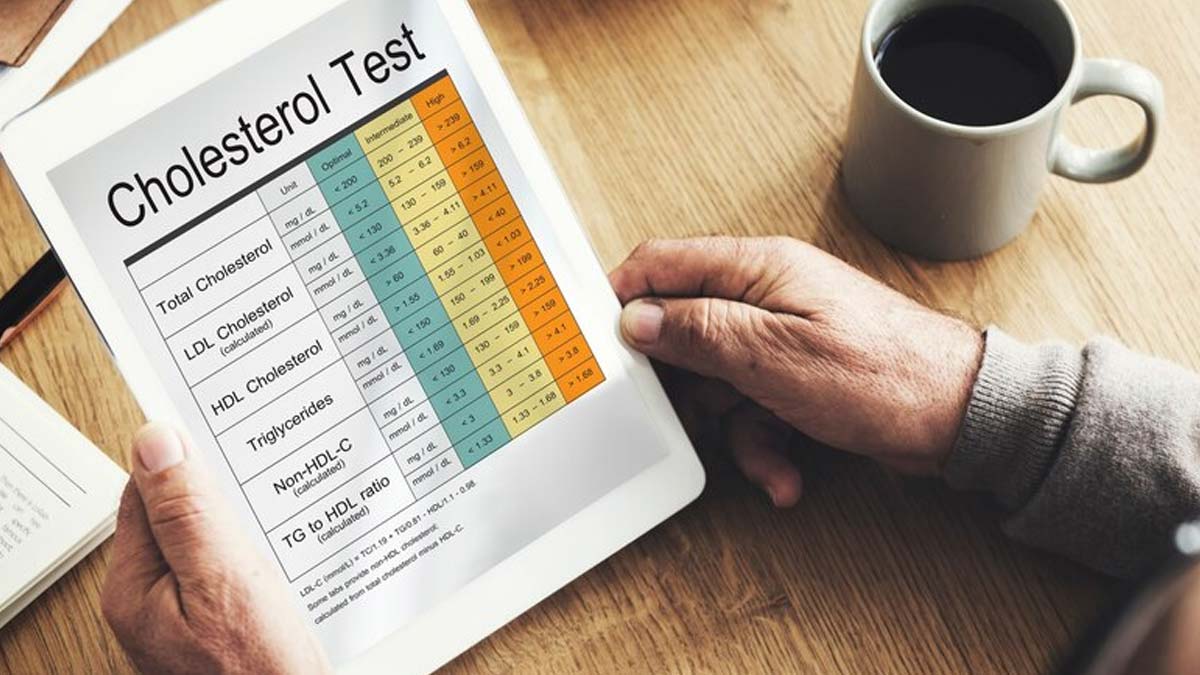
High cholesterol is a leading risk factor for heart disease and stroke. Worldwide, it is estimated to cause 20.6 lakh deaths and 2.97 crore Disability-Adjusted Life years (DALYs), according to the World Health Organisation (WHO).
Table of Content:-
Often referred to as a silent killer, elevated cholesterol levels may not show any symptoms, leading to delayed diagnosis and treatment. This is when a lipid panel may come in handy—a blood test that can tell you whether you're at risk or if you have already developed the condition. In certain cases, it may also help diagnose borderline high cholesterol, which is when you have elevated cholesterol levels but not high enough to be a concern.
Also Read: THIS Cholesterol Symptom Could Strike At Night: Other Warning Signs To Note
What Exactly Is Cholesterol?

Cholesterol is a waxy substance that is actually required by the body to function properly.
It helps build important cells in the body, assists in the production of hormones, and also aids in the production of vitamin D.
However, it is important to note that there are different types of cholesterol. Two primary forms include:
Low-Density Lipoprotein (LDL) cholesterol: This type of cholesterol is often referred to as "bad" cholesterol, as high levels can contribute to plaque accumulation and formation in the arteries, resulting in atherosclerosis and an increased risk of heart disease and stroke.
High-Density Lipoprotein (HDL) cholesterol: This type of cholesterol is classified as "good" cholesterol because it helps eliminate excess cholesterol from the bloodstream and transports it back to the liver for processing and removal. Higher HDL cholesterol levels are generally associated with a lower risk of heart disease.
What Is Borderline Cholesterol?

Speaking with the OnlyMyHealth team, Dr Mayur Jain, Consultant - Cardiothoracic Surgeon and Heart and Lung Transplant Surgeon, P. D. Hinduja Hospital and MRC, Mahim, says that borderline cholesterol is when a person has a total cholesterol level between 200 milligrams (mg) per deciliter (dL) and 239 mg/dL.
In general, a total cholesterol level of less than 200 mg/dL is considered normal, whereas a total cholesterol level of 240 mg/dL or greater is considered high. When the numbers are higher than normal but not high enough to be considered a risk, it means borderline cholesterol.
Dr Jain suggests that borderline cholesterol is also concerning and requires immediate management. This is because, if left untreated, it can become uncontrolled and lead to various diseases, ‘including and not limited to coronary artery disease.’
Also Read: Are You Taking Statins For Cholesterol Management? Here Are Mistakes You Should Avoid
Can Borderline Cholesterol Be Reversed?

According to Dr Jain, borderline cholesterol can be treated and reversed with the help of a healthy diet and lifestyle modifications. This could include a low-fat diet rich in vegetables, fruits, nuts, and seeds, daily exercise, and efficient stress management.
According to the Harvard T. H. Chan School of Public Health, many researchers have backed the Mediterranean diet in reducing the risk of heart disease.
As far as exercise is concerned, regular brisk walking for an hour may increase HDL cholesterol and lower triglycerides substantially in 24 weeks, according to a 2013 study published in the International Journal of Clinical Practice.
In certain cases, and if need be, Dr Jain says statins, a cholesterol-lowering medication, can be prescribed too.
Conclusion
A borderline cholesterol diagnosis can be viewed as a warning sign for a more concerning health issue. With the right measures, dietary changes, and lifestyle modifications, you can reverse the condition and reduce your risk of heart complications in the future. While progress may take time, being consistent is the key to achieving faster results.
Also watch this video
Read Next
Nearly 30% Indians Have Never Measured Their Blood Pressure: Know Risks And Recommendations
How we keep this article up to date:
We work with experts and keep a close eye on the latest in health and wellness. Whenever there is a new research or helpful information, we update our articles with accurate and useful advice.
Current Version